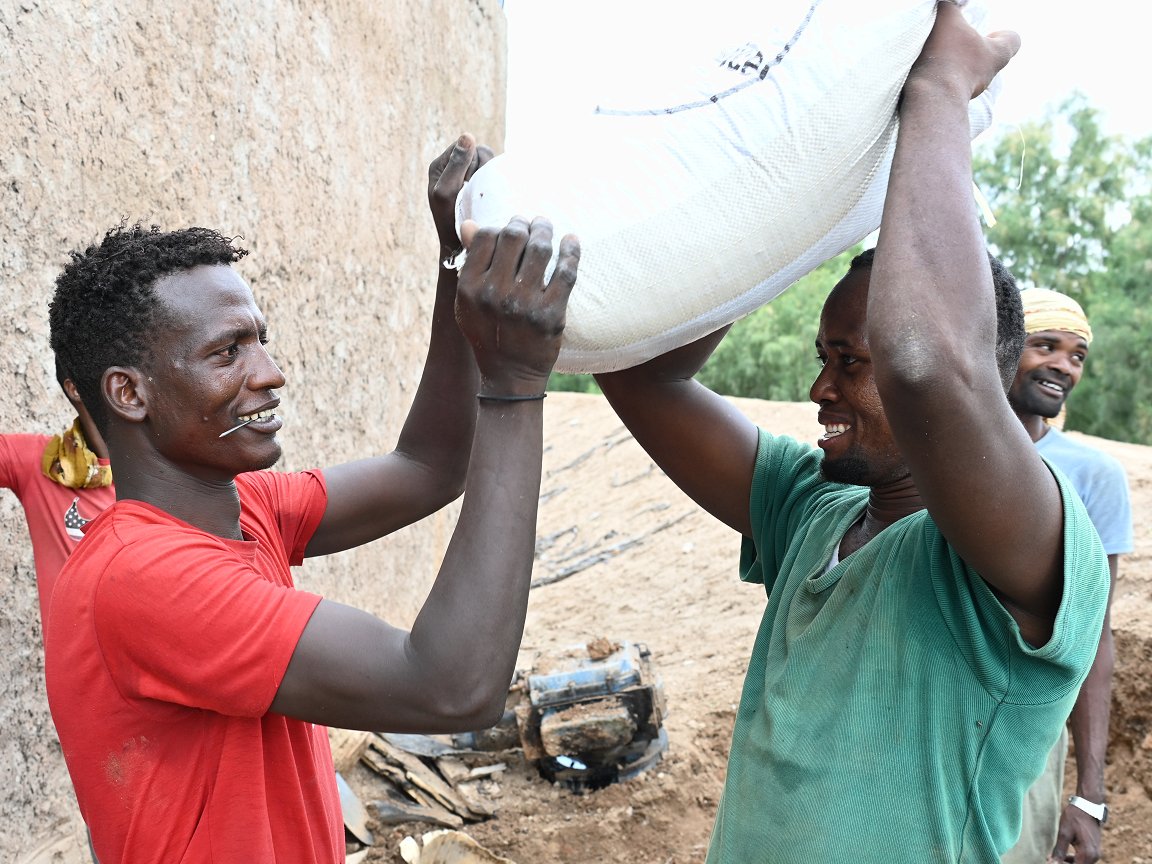
ICRC assists Somali Red Crescent to prepare for potentially devastating El Niño rains

By the ICRC
(This story appeared first on the ICRC website yesterday. Editors: please register here to download high-resolution photos and video.)
For weeks, forecasts have warned of increased rains due to El Niño this season, with a 90 per cent chance it will trigger severe flooding in the Horn of Africa.
In Somalia, where the planting season just started, farmers have barely recovered from one of the harshest droughts in years and yet again find themselves faced with another climatic event they have no control over.
The ICRC and the Somali Red Crescent Society are working closely with communities to help them prepare for potential floods.
According to humanitarian estimates, 1.6 million people in Somalia will likely be affected because of the floods while 1.5 million hectares of land around the two main rivers – the Juba and Shabelle – are at a high risk of flooding.
“It is a very dangerous scenario. Sometimes it kills people. Your livelihood is swept away, and you have to start from scratch,” says Abdullahi Hassan, a farmer from Beledweyne, a flood-prone town in the central Hirshabelle region of Somalia. “You come back to bare soil.”
This year’s Gu rains in March triggered floods that wreaked havoc, particularly in Beledweyne and some parts of Jubaland region.
‘The interaction between weather, conflict, and climate change is not fantasy. It is a reality
we see every day’
More than 400,000 people were displaced. The floodwaters submerged homes and farms, washed away livestock, forced the temporary closure of schools and health facilities, and damaged roads. It is feared the coming rains could be far worse.
The frequency of these weather events coupled with Somalia’s enduring conflict is making life difficult for communities. Conflict has been the primary driver of displacement in the country this year.
“The interaction between weather events, conflict, and climate change is not a fantasy. It is a reality we see every single day. Climate change does increase conflict and suffering for people,” says Pascal Cuttat, head of the ICRC in Somalia.
The ICRC is working closely with the Climate Centre to strengthen its preparedness in anticipation of the floods. To help communities prepare, the ICRC has distributed close to 75,000 sandbags across the country as an emergency measure.
Abdullahi is one among the 200 farmers in Beledweyne who received sandbags to protect their farms from river water. He hopes that the rains are not as harsh as anticipated and will be beneficial for his crop production.
He adds: “My whole family is dependent on this farm. I cannot leave because people are saying something is coming. We have to see with our eyes if El Niño will come. We have stopped planting for now. When the floods come, we will rescue what we can.”
The ICRC has also prepositioned 24 manual and four mechanical water-treatment kits; medical supplies to treat acute watery diarrhoea have been provided to 26 SRCS clinics and nearly 50,000 hygiene kits (mosquito nets, jerry cans, buckets, soap, water purifying tablets and sanitary pads) have been prepositioned
Red Crescent volunteers sandbag a vulnerable water-point in the central Somali town of Beledweyne, near the border with Ethiopia. It lies in the River Shabelle valley and faces heightened risk of severe flooding in this El Niño year. (Photo: ICRC)